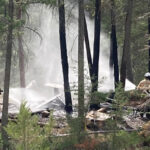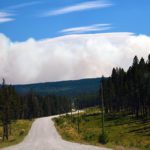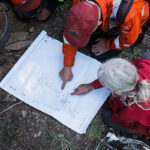Home »

Are scientists trying to divide wildlife conservationists in B.C.?
By Mark Hall
In a recent study on wildlife management in B.C. titled: “Hunting as a management tool? Cougar-human conflict is positively related to trophy hunting” [1], the authors found a positive correlation between the two variables considered in their study. The two variables considered were – 1) characteristics of cougars harvested by hunters in B.C. over the last 30 years and 2) the characteristics of cougars killed in the province as a result of conflicts with humans.
The authors admit the relationship between hunter harvest and the cougars killed as a result of conflicts with humans is not a proven cause-and-effect relationship. In other words, the study only demonstrated that over the last 30 years hunters tended to harvest older animals and younger animals tended to make up most of the animals killed as a result of conflicts with people. The authors, however, have gone on to promote the message that cougar-human conflict is positively linked to trophy hunting as being a scientific truism.
If you looked at data collected in Copenhagen after the Second World War one can find a positive correlation between the annual number of babies born and the annual number of storks nesting in the city. In the decade after the war the number of nesting storks increased as did the number of babies being born. So does that mean storks bring babies?
The post-Second World War baby boom in Europe was in part caused by young men and women starting their families after being separated by war and from more people moving to the cities to live and work. Both these changes created a human population boom and a surge in home construction. Storks benefited from the increase in home construction since their nesting habitats in cities are the rooftops of buildings. Consequently the storks experienced a population boom of their own. While the numbers of nesting storks and babies born followed a similar increasing trend–one was not simply causing the other.
The findings presented in this new B.C. cougar study are nothing new to wildlife managers. The study might had been useful for understanding human-wildlife conflict had it considered a suite of other important factors that could explain why younger cougars tended to be more involved in conflict with people in B.C. Factors such as the change in the cougar populations over the last 30 years, whether cougars were above carrying capacity, male/female structure in the different cougar populations, causes of human and livestock attacks, the increase in human population, the changes in outdoor recreation activities, changes in domestic livestock management or the role of urban and rural landscapes in attracting predators were not evaluated to help explain the human-cougar conflict question.
The B.C. cougar study was published in the BioMed Central Ecology journal. This science journal is not a North American publication and it does not specialize in North American wildlife science. Some scientists will publish in obscure journals if one of the top peer-reviewed science journals has already rejected their manuscripts. Obscure journals give authors the ability to publish studies that would otherwise not make it into print. The eminent scientific journal that underpins wildlife management in North America is the Journal of Wildlife Management.
In North America, one of the key tenants of wildlife conservation is that public policy and management is informed by sound science. This holds true whether the wildlife species being studied are game species or not. It is of the utmost importance to the conservation of all wildlife in B.C. that the science that drives public policy be credible, unbiased and relevant to the most critical problems facing the future of wildlife in the province. North American hunter-conservationists know this and have been advocates for the use of sound science in wildlife management for over a century. In today’s society, however, many conservationists are not hunters but that does not diminish the importance of them being wildlife conservationists.
Hunter or not, all those concerned for the sustainable future of wildlife in B.C. should be concerned about scientists who advocate that hunting is the line that needs to divide wildlife conservationists. In a province with increasing population and development pressure, the future of wildlife depends on all conservationists being united on common ground and making decisions based on sound science.
– Mark Hall is Vice-President of the East Kootenay Wildlife Association, Cranbrook







